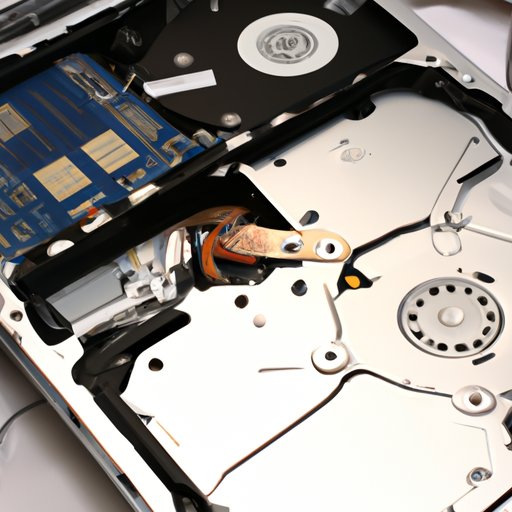
I. Introduction
Mac users, like any computer user, can run out of storage space. When storage space on a Mac becomes scarce, it can slow down the performance of the computer and affect its overall functionality. In this article, we will explore ways to free up storage space on a Mac.
Why Freeing Up Storage Space on a Mac is Important
Without sufficient storage space, a Mac can experience significant performance issues. For example, a lack of storage space can cause slow boot times, laggy apps, and unexpected shutdowns. Additionally, some Mac users may not be able to install macOS updates without freeing up some space first.
What Will be Covered in This Article
This article presents some of the most effective methods for freeing up storage space on a Mac. Part II covers how to find out what is taking up space on your Mac. Part III discusses recommended cleanup tools, and Part IV presents tips and tricks for freeing up space. Finally, in Part V, we will conclude by summarizing the tips provided and offering next steps.
When to Start Freeing Up Space
It’s always a good idea to create some free storage space on your Mac before the storage becomes scarce. You should consider freeing up some space when:
- Your Mac feels slow or sluggish
- You receive a message that your startup disk is almost full.
- You are unable to install macOS updates due to insufficient space.
II. How to Find Out What is Taking Up Space on Your Mac
The first step in freeing up storage space on your Mac is identifying what is taking up the most space. Luckily, Apple provides a built-in tool to help you do this.
Using the “Storage” Tool
To use the “Storage” tool:
- Open the “Apple” menu and select “About This Mac.”
- Click on the “Storage” tab.
- Wait for the tool to calculate how much storage each category is taking up.
- Review each category and delete any unnecessary or unwanted files.
III. Recommended Cleanup Tools
There are also third-party applications available that can help you clean up your Mac. Here are some suggested applications:
CleanMyMac X
CleanMyMac X is one of the most popular Mac cleanup tools. This app helps users find and delete unwanted files, old documents, and useless data. It can also help manage extensions and uninstall apps completely.
Daisy Disk
Daisy Disk is another well-known Mac cleanup tool. It displays all the files on your Mac in a visually appealing way, making it easy to see what is taking up space. From there, you can explore and delete massive files and folders.
Onyx
Onyx is a free utility that can help with cleaning up your Mac. It offers a range of options from maintenance, cleanup, and system optimization. Onyx is a versatile tool that can help with many different aspects of Mac maintenance.
Note:
It is essential to research and read reviews before downloading any third-party cleaning tools. Additionally, it is always a good idea to back up your data before using any of these tools.
IV. Tips and Tricks for Freeing Up Space
Here are some additional tips and tricks for freeing up storage space on your Mac.
Delete Unused Applications
If you have applications installed that you no longer use, deleting them can save valuable storage space. Ensure you check for leftover files, such as log files and cache that are associated with these applications.
Clear Out Email Messages
Email messages with attachments take up a lot of space on your Mac. Go through your mailbox and delete emails that are no longer required. If you would like to keep some emails for future reference, transfer them to a cloud-based service such as iCloud or Gmail.
Use Cloud Storage
Consider using cloud storage if you have large files that are rarely accessed. Services like iCloud, Dropbox, and Google Drive offer ample storage that can be accessed from anywhere.
Remove Downloaded Files That are No Longer Required
You may have downloaded files that you no longer need, such as old installation files or PDF documents. Go through your Downloads folder and delete any files that you no longer require.
Consider Using an External Hard Drive or Solid-State Drive
An external hard drive or solid-state drive can provide additional storage space for Mac users. It’s an ideal solution if you have large files, such as music, video, and image files that are taking up a lot of space on your hard drive.
Change the Location of Files to a Different Drive
If you do not want to use an external hard drive, you could consider changing the location of some files to a different drive. For example, you could move the iTunes library to an external hard drive.
V. Conclusion
Freeing up storage space on a Mac is critical in keeping your computer running smoothly. Part II of this article covered identifying what is taking up space on your Mac using the built-in “Storage” tool, and Part III discussed third-party applications that can help you clean your Mac efficiently. Part IV presented tips and tricks for freeing up space, extending beyond deleting files or using cleanup tools. We encourage Mac users to take advantage of these tips and tricks regularly to ensure their Macs are running efficiently. Consider setting reminders for regular cleanups, sharing tips, and ideas with the community.





